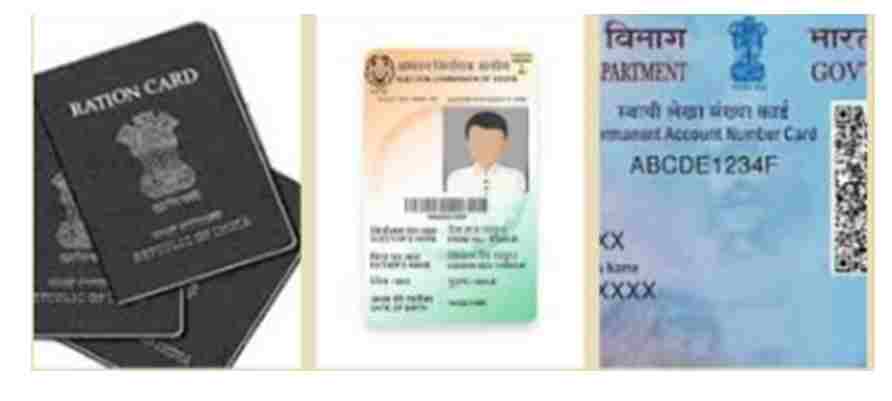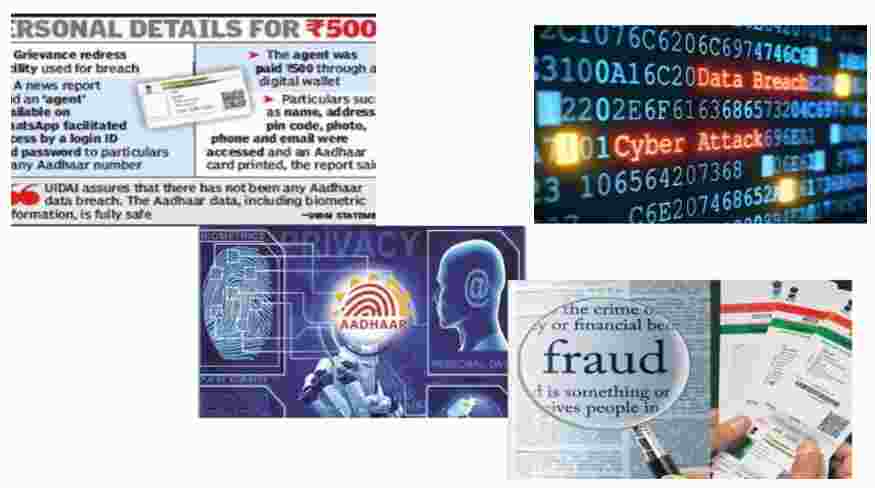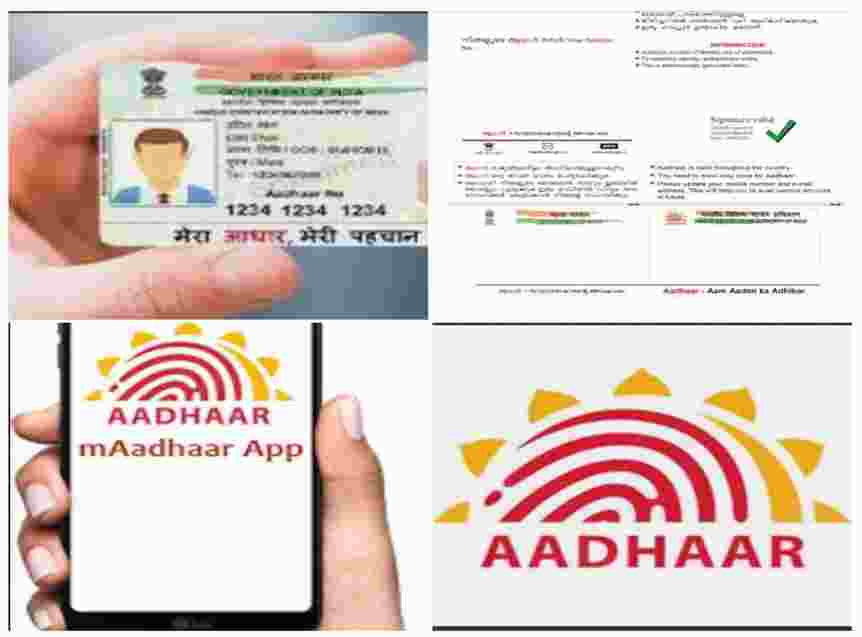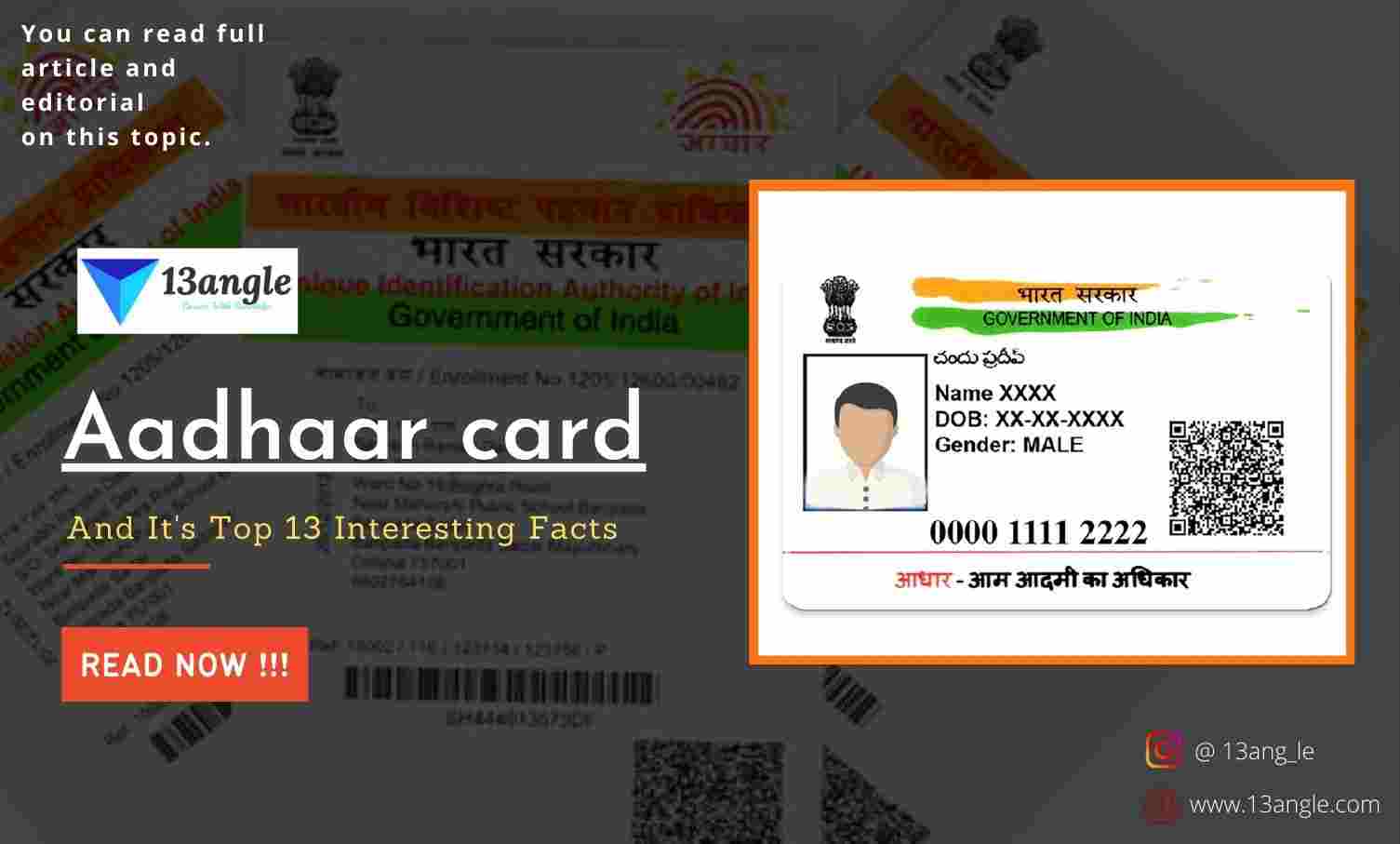- Umang Sagar
- Identity Document, Recent article
Aadhaar Card: A Necessity Or A Burden

A small card holding all the minor details of your whereabouts, whether you should be worried about it or be grateful?
In India, around 2009 we all came across the word Aam Aadmi Ka Adhikar (Rights Of Common Man) which is now changed to Mera Aadhar Meri Pehchan (My Base My Identity). A 12-digit unique code that has the power to hold all your important data.
In 2009 Government of India established an organization named UIDAI (Unique Identification Authority of India), under the Ministry of electronics and information technology. UIDAI keeps a record of a person’s biometric (iris scan, fingerprints) and demographic (DOB, Gender) data. As this data is unique for every individual, there are very less chances of data getting mixed up. Once upon enrolment of the Aadhaar card a 12-digit random no. generates. This no. is also unique for a person to person and hence cannot be guessed just by looking at a person’s DOB or name. But there are a lot more things that a person should know before he or she enrolled for an Aadhaar card or if holding an Aadhaar card.
History

- In India, everyone holds an Identification card. This could be a Pan Card, a passport, or a ration card, then why there was a need for another identity card was the big question. Even though we had an enormous amount of id proofs, the Aadhaar card was proved to be the beneficial one as it has an individual’s fingerprints, and iris scan, and hence even if stolen or lost cannot be misused. The reason that Aadhaar was introduced in India is by taking people who come below the poverty level into consideration. It was introduced to make sure that no fake ids or cards can be produced by others so that the one in need can take maximum benefits from it. Lots of debate came into play when the decision of the Aadhaar card was taken. Most of the people were afraid as their privacy was the main concern. In 2009 under the governance of Prime Minister Manmohan Singh, UIDAI was established and Nandan Nilekani was appointed as Chairman of UIDAI. Nandan Nilekani was co-founder of Infosys. In 2010 he launched the first logo of the aadhar card. Nandan made it clear to the Indian citizen that enrolment of an adhar card is a voluntary decision and that it’s not mandatory for everyone to have it.
The History Of Controversies

The introduction of Aadhaar introduced a lot of controversies as well. Not everyone was in support of it. The Aadhaar card was introduced by the Congress party after a lot of research. A. To studies, no other country has ever done this. As a part of small-scale projects, other countries tried to obtain biometric data of the citizen but the citizens were completely against it as it was a breach of their privacy. In India, after the launch, it was tried on a very small scale and started in small villages. BJP which was the opposition party at that time was completely against the project. The first critic of the aadhaar project was Justice V R Krishna Iyer who said: “that AADHAAR should not be implemented as it is just breaching privacy”. Later after a lot of controversies, the Aadhaar card was still a part of voluntary choice till the ruling of the congress party. As soon as BJP took over their first motto was to drop the plan of Aadhaar card enrolment, later after a meeting with Nilekani, BJP started continuing the plan. This time Aadhaar card came into an all-new form. The Modi government made it compulsory to link the Aadhaar card with the Ration card and pan card as well as with bank account and hence every citizen needs to have an Aadhaar card. In government offices Aadhaar based attendance took place. In 2016, Arun Jaitely presented a bill to provide legislative support to the Aadhaar project. On March 11, 2016, the Aadhaar Act was passed in Lok sabha, which was promptly rejected by Lok sabha later.
The main concern about this Aadhaar project was that these projects hold very important data and can be a dangerous practice regarding privacy as if falling into the wrong hands can cause mass surveillance. The biometric data are highly sensitive and need to be well protected. An Aadhaar card at present is a one-stop for every documentation and almost every Indian holds it. A card with really no purpose is running most of the important work.
Present
- In India currently, almost 99% of the population has an Aadhaar Card (Saurabh Garg- UIDAI CEO). Even after lots of debates and controversies on the Aadhaar project, it is considered to be an important technological asset in India. All government services have made it mandatory to link the Aadhaar card for getting maximum benefits. Now Private sectors are also moving towards this trend and at present, almost every private sector has made it a compulsory document. Linking the Aadhaar card with Pan Card, Rashan card, and sim card is also mandatory.
Types Of Aadhaar Card

eAadhaar card: Digitally signed by UIDAI, it only displays the last 4 digits of the Aadhaar card and can be downloaded by using a registered mobile number.
mAadhaar: m Aadhaar App is available on the play store, and can be used for offline purposes by QR code.
Aadhaar Letter: Mostly used, paper base letter usually sent by post after enrolment of Aadhaar card.
Aadhaar PVC Card: Recently introduced PVC Aadhaar card is easy to carry and has a QR code and can be ordered from uidai.gov.in or resident.uidai.gov.in at a minimal cost of INR 50/-.
- Now that we can hardly survive without an Aadhaar card, project Aadhaar came with quite a few pros of its own and made our life easier in many ways like,
- Availing bank services by linking the Aadhaar card to our bank accounts as a valid photo Id and address proof.
- You can link your Pan Card as well as Voter id with your Aadhaar card for ease of verification.
- Narendra Modi introduced a Digital locker for pensioners who need not go physically for availing themselves of pension services as their data automatically can be retrieved by the agency through 12 digits no.
- As the Aadhaar card was voluntarily accepted by an Indian citizen, it is also a free service provided by the Indian government.
- Even though the Aadhaar project came with many governmental and private sector benefits it also comes with quite a few cons.
- The main issue that arose with the introduction of the Aadhaar project was the privacy of common people. As the Aadhaar card is linked with all of our important databases, a small leak can cause huge losses.
- A lot of people are still unaware of the real aspects and uses of the Aadhaar card, and hence can be misused by others.
- Although it is not mandatory to have an Aadhaar card, the government’s decision to link Aadhaar with their various schemes forced a lot of people to have one.
Top 13 Interesting Facts About Aadhaar Cards
An Aadhaar card has a combination of random numbers that are generated as a person enrolls and that number is the main identity.
It is not mandatory to have an Aadhaar card. But as most of the documentation needs Aadhaar most Indians prefer to have one.
There is no expiry date for the Aadhaar card and will be valid for a lifetime.
The main aim for introducing the Aadhaar card was “growth” in the memory of Rajiv Gandhi.
The first people who enrolled for the Aadhaar card were 1000 villagers of Tembhali, Maharashtra.
The Aadhaar card scheme is backed up by a constitutional scheme.
A person staying for 182 days or more than 182 days in India can enroll for an Aadhaar card.
Those who have blindness or any eye-related issue can also enroll in an Aadhaar card.
Aadhaar was also acknowledged as the “Hindi word of the year” in 2017.
Although the Aadhaar card was launched in India by the Congresses party it was the BJP (under the governance of Prime Minister Narendra Modi) who made it mandatory.
The Aadhaar card was introduced after thorough research and taking lessons from other countries. As no other country has biometric data of their city as it is a breach of privacy, after making the Aadhaar card a part of the citizenship act it was declared legal in India.
Narendra Modi who once stood against the UIDAI establishment and opposed the enrolment in Gujarat has now made it a mandatory Id.
So far acc. To the UIDAI authorities, roughly more than 120 cr of the Aadhaar card has been issued, and numbers are still going high.
Few Points To Remember
An Aadhaar card is not mandatory.
A single person can have only 1 Aadhaar card.
An Aadhaar card cannot be faked as it has a person’s biometric and demographic data.
The Aadhaar card is provided by UIDAI, and is free of cost (1st time), for any updation it cost INR 50/-
The Main headquarters of UIDAI is in Delhi, and 8 regional offices (Mumbai, Chandigarh, Bengaluru, Hyderabad, Delhi, Guwahati, Lucknow, and Ranchi), with a technology center based in Bengaluru.
- To conclude I must say that whether to possess an Aadhaar card completely depends on every Individual, but now as in India, it is one of the most preferred Identification cards I suggest choosing wisely.




